
About This Quiz
Snakes are elongated and legless carnivorous animals belonging to the serpentes suborder of the reptile class. They can be found in different habitats on every continent except Antarctica, and there are also sea snakes which can be found swimming in the waters of the Indian and Pacific Ocean.
They have highly specialized structures which allow them to function effectively. These animals have mobile jaws which allow them to swallow prey much larger than their heads. Most of them have only one functioning lung, and their kidneys appear one in front of each other to accommodate their narrow bodies.
Snakes fall into one of two groups; venomous and non-venomous. Most species of venomous snakes use it to kill their prey as well as for self-defense, while the non-venomous are known for killing their prey by constriction or by swallowing them alive.Â
How well do you know your snakes? If you were given images of some of these creatures, would you be able to guess their name or even where they can be found? If you would like to test your knowledge, as well as learn some cool facts about these reptiles, then this is the quiz for you!

The western diamondback rattlesnake, also known as the Texas diamondback, is a venomous species of rattlesnakes found in the coastal plain of southwestern states and Mexico. It is responsible for most of the snakebite mortalities in the region as its venom contains both cytotoxins and myotoxins.

The Burmese python is one of the largest species of snakes in the world and is known to grow to lengths of almost 19 feet and weights exceeding 150 pounds. These nocturnal carnivorous animals can be found near water in tropical regions of South and Southeast Asia.

The common death adder is one of the species of death adders which is native to Australia where it is one of the most venomous snakes in the country and by extension, the world. They also possess some of the longest fangs of many Australian snakes, which they use to feed on small mammals and birds.
Advertisement
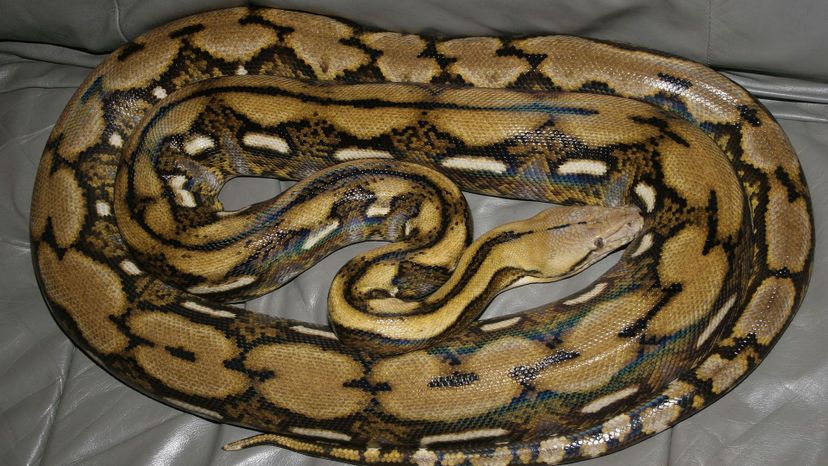
The reticulated python is a species of python which is known for being the longest snake (and reptile) in the world, and it is also one of the three heaviest. There have been reports of these nonvenomous constrictors killing and eating people.

The saw-scaled viper which is also called the carpet viper, is a venomous snake found in dry regions of many African and Asian countries. This snake, which has a short and rounded snout with keeled dorsal scales, is responsible for the most deaths caused by snakebites in the world.

The ball python, also called the royal python, is a species of nonvenomous constrictors found in sub-Saharan Africa. Its name "ball python†is in reference to the animal's tendency to curl up into a ball when it is frightened or stressed.
Advertisement

The Philippine cobra, also called ulupong, is a species of spitting cobras which are found in the northern regions of the Philippines. The highly venomous snake is known to feed on small mammals and reptiles, including other snakes.

The emerald tree boa is a species of non-venomous boas which can be found in the rainforests of South America. The snake has an emerald green ground color and yellow belly with white lightning-shaped stripes down its back.

The tiger snake is a venomous snake found in parts of Australia and neighboring coastal islands. As its name suggests, the snakes have a banded pattern similar to that of a tiger, but it varies in its coloration. They also account for almost 20% of snakebites in the country with a mortality rate of 40 - 60% if left untreated.
Advertisement

The beaked sea snake, sometimes called the hook-nosed sea snake, is a species of venomous snake which can be found in the tropical waters of the Indo-Pacific oceans. Responsible for more than half of the bites caused by sea snakes, they can be found both along the coast and at depths exceeding 100m, where they can stay for five hours.

The bull snake is a subspecies of gopher snake which can be found in parts of Mexico, Canada and the central United States. They are powerful constrictors which are known for feeding on small mammals, ground-nesting birds, and rattlesnakes.

The black mamba is a venomous snake which is endemic to the savannahs, rocky slopes and woodlands of sub-Saharan African countries. It is one of the most venomous snakes in the country, and for those bitten, its venom is known to cause collapse within 45 minutes.
Advertisement

The gray-banded kingsnake, also called Davis Mountain king snake, is a species of nonvenomous snakes which are endemic to the southwestern United States. They are commonly kept as house pets as they are fairly easy to care for.

The blue krait, also referred to as the Malayan krait, is a species of highly venomous snakes which can be found in southeast Asia and Indonesia. The friendly snake is known for having stripes of dark brown, black or bluish-black crossbands down its body and tail.

The yellow-bellied sea snake, also called the pelagic sea snake, is a species of snakes which can be found in tropical waters around the world. As its name implies, it has a yellow underbelly while its back is a brownish color. Its highly potent venom is able to cause renal damage if anti-venom is not administered.
Advertisement

The rainbow boa, also known as the slender boa (epicrates cenchria) is a species of boa which is endemic to Central and South America. These land snakes are known for the holographic sheen that their scales give off in the sunlight.

The milk snake is a species of nonvenomous kingsnake known for their white-black-red and/or red-black-yellow shiny-scaled banded pattern. They are nonvenomous and are known to grow to 60 inches in length.

The eastern brown snake, also referred to as the common brown snake, is a brownish-black venomous snake which is native to Australia and New Guinea. It is responsible for approximately 60% of the snakebite-related deaths in the country.
Advertisement

The inland taipan, also known as the western taipan or the small-scaled snake, is the most venomous snake in the world and it is endemic to eastern Australia. It has been estimated that just one bite from this snake is lethal enough to kill 100 men.

Belcher's sea snake, also known as the faint-banded sea snake, is a venomous species of snakes which can be found throughout the Indian Ocean, the Gulf of Australia and Thailand. They rarely come on land, but they have been known to bite fishermen handling nets.

The corn snake is a species of rat snakes which are known for killing their prey by constricting them. These non-venomous snakes help to control the rat population, but are often killed because they are mistaken for the venomous copperhead.
Advertisement

Boa constrictors are a species of large non-venomous snakes found throughout the Americas and the Caribbean islands. They can grow to lengths of 13 feet. These solitary, nocturnal animals are known for (as their name says) constricting their prey and consuming them whole.

The green tree python is a species of snakes which are native to the islands of Indonesia, New Guinea and parts of Australia. These bright green snakes can primarily be found coiled around tree branches where they feed on small mammals and reptiles.

The cottonmouth snake is a species of venomous pit vipers which can be found in southeastern regions of the United States. It is the only semiaquatic viper in the world and is usually found in or near slow-moving water. Bites from the snake have been frequent in the Mississippi River Valley, but fatalities are very rare.
Advertisement

The northern water snake is a species of nonvenomous snakes which are native to North America from Texas to Quebec. The snake, which hunts during the day, has many predators which it defends itself from with musk and excrement.

The Eastern indigo snake is a species of nonvenomous snakes which are native to regions of eastern United States. Growing to lengths exceeding 9 feet, it is the longest snake in the country, and it is known for its blue-black iridescent color.

The eyelash viper is a venomous pit viper which can be found parts of Central and South America. Although they are small and usually found in trees, their venom is can cause loss of a limb if the bite is left untreated. As their name elides, they have supraciliary scales above their eyes.
Advertisement

The green anaconda, also called the water boa, is a large snake which can be found in tropical regions of South America. The non-venomous boa is the longest and heaviest of all the snake species, and it is known for its ability to swallow large prey.

The black rat snake, also called the western snake, is a species of nonvenomous snakes which are found on the rocky hillside and flat farmland of central North America. When they feel threatened, they either wrinkle themselves into a kinked position, or they produce a foul-smelling musk to deter their predators.
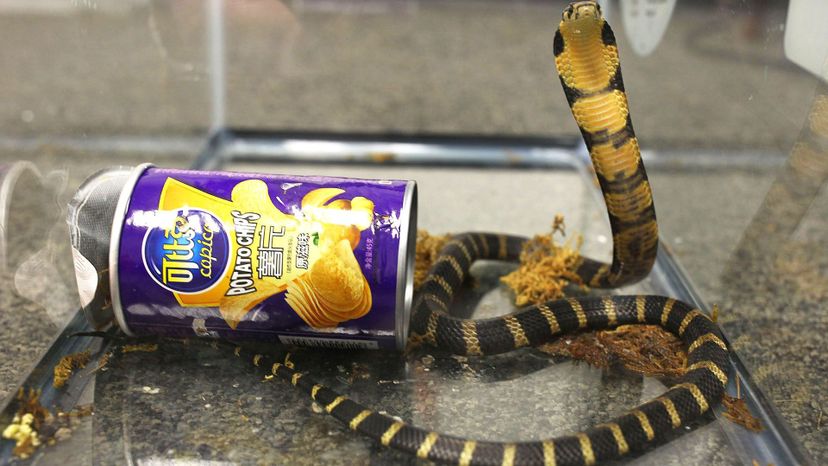
The King cobra, which is sometimes called the hamadryad, is a species of venomous snakes which are endemic to Southeast Asia and India forests. They are the longest snakes in the world whose venom is able to cause central nervous system and cardiovascular collapse.
Advertisement
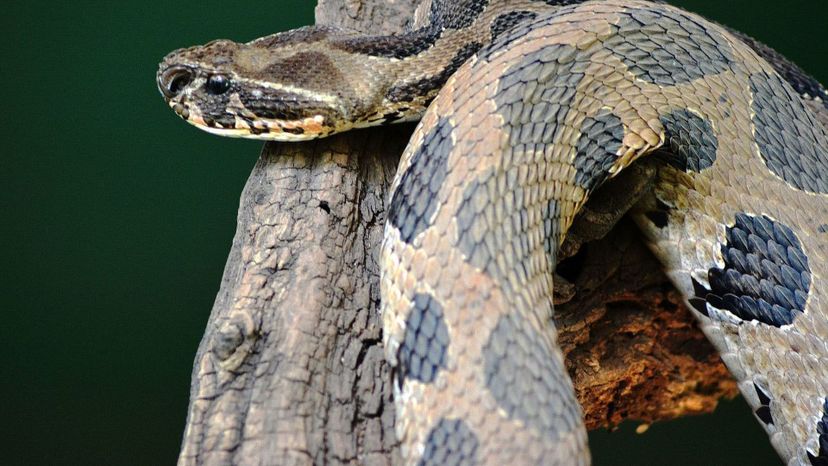
Russell's viper is a species of Old World venomous vipers which can be found throughout many Asian continents. Named after the herpetologist who discovered it, it is also on the list of big four snakes in India which cause the most snake bites and deaths in the region.

The South American bushmaster, which has several other names, is a venomous pit viper which can be found in the forests of South America, as well as some of the Caribbean islands. Compared to many other vipers its venom has been called weak, but it does have a high mortality rate.

The African puff adder, also called the common puff adder, is a venomous species of vipers found in the grasslands of Morocco, Arabia and Africa. This snake is responsible for causing the most snakebite fatalities in Africa which typically occurs when people do not seek treatment.
Advertisement

The common krait, also called the Indian krait, is a species of venomous snakes found in the jungles of many Indian subcontinents. This snake of one of the "big four†- a group of snakes known for causing the most snake bites on humans in the country.

The boomslang is a large venomous tree snake which is native to parts of Sub-Saharan Africa. Its venom is highly potent, and although the snakes are very timid, they will bite people who attempt to handle or catch them.
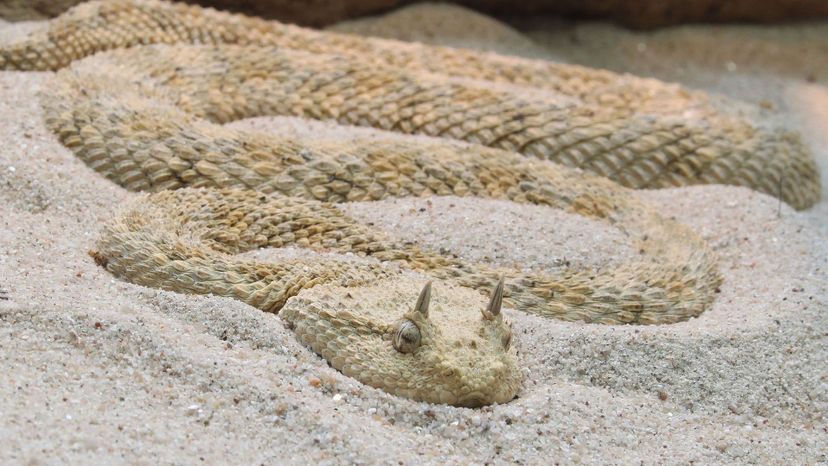
The horned desert viper, also called the Saharan homed viper, is a venomous species of viper which is native to the deserts of Northern Africa and the Middle East. As its name suggests, it has supraocular horns as well as keeled scales in pale brown.
Advertisement

The western coral snake is a brightly colored banded snake whose venom is said to be twice as powerful as the venom of the rattlesnake. There have not been any reported deaths from this animal, probably due its size and location.

The Bothrops jararaca, simply known as the jararaca, is a species of pit vipers which are endemic to northern Argentina, Paraguay and Brazil. The common hypertension and congestive heart failure drug - angiotensin-converting enzyme inhibitors, was developed using this snake's venom.

The Chinese cobra, also called the Taiwan cobra, is one of the most prevalent venomous snakes of the mainland of the countries it is named after. It usually avoids contact with humans, but it is has been known to bite them on occasion.
Advertisement
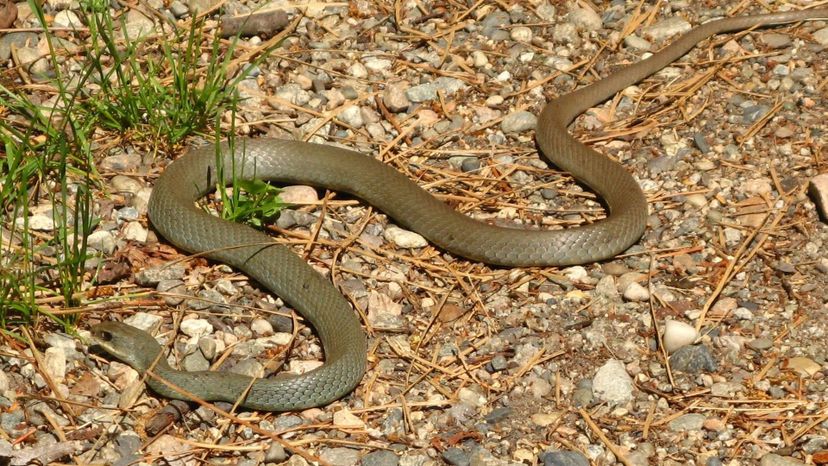
The western yellow-bellied racer, simply called the western racer, is a species of snakes which is endemic to western regions of the United States. The nonvenomous subspecies is easily recognized by its long and slender shape as well as its yellow underbelly.